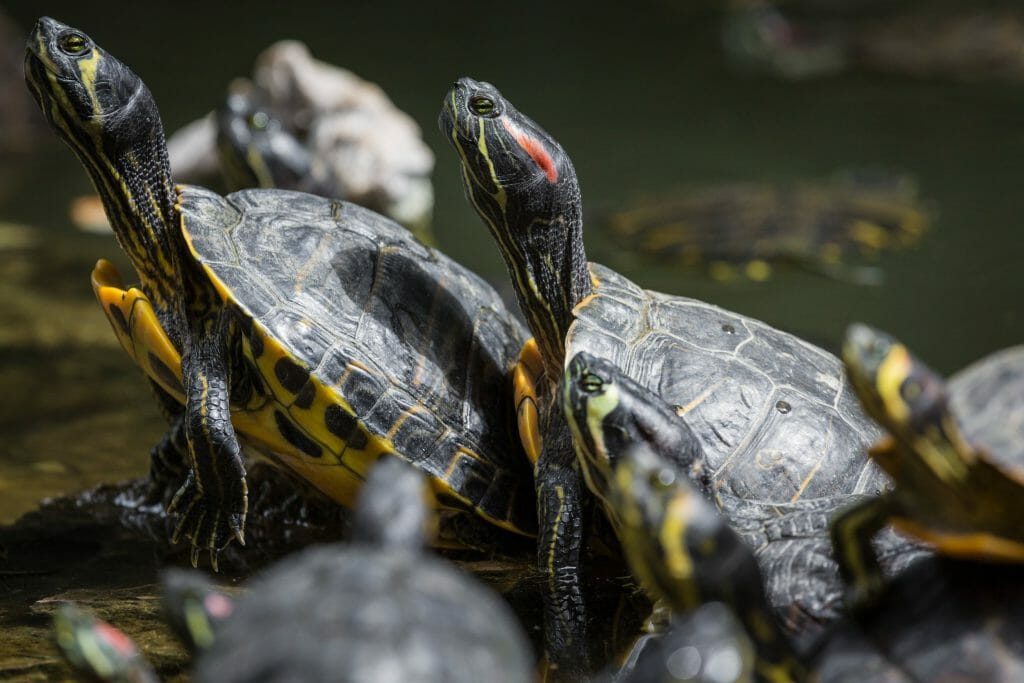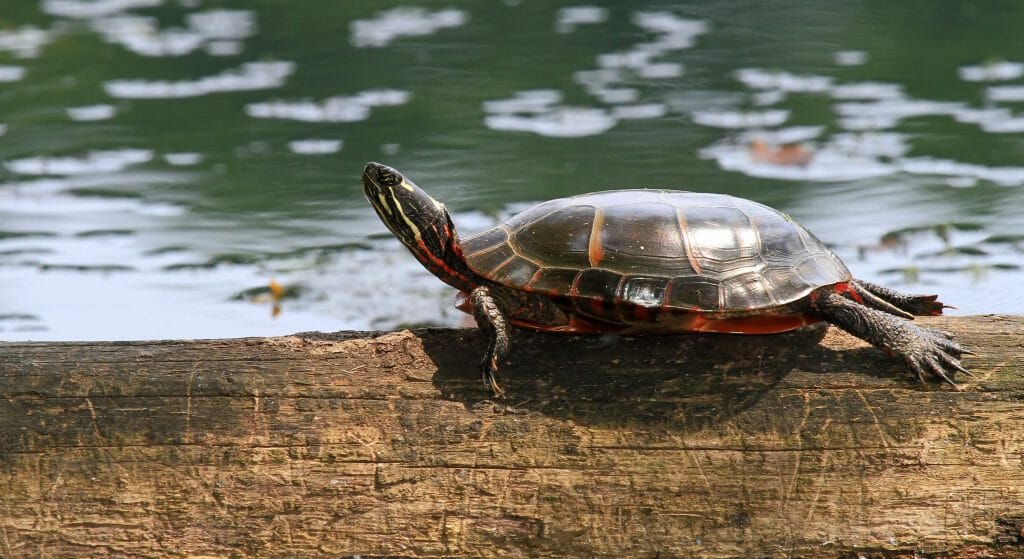Do Red-Eared Sliders Make Noise: Understanding the Sounds That These Turtles Create
Yes, red-eared slider turtles make noises. Some familiar sounds that sliders make include squeaks, hisses, and chirps. Turtles make noise as they move around and communicate with others in their environment.

If you notice your red-eared slider making strange noises, you must take it to a vet for an evaluation.
Table of Contents
Red-Eared Slider Turtle Noises
Turtles make various sounds to communicate with each other and with prey. These noises are used for territorial defense, mating, and communication between individuals.
For example, red-eared sliders make a hissing noise to ward off predators. Additionally, they make a chirping noise to attract mates and communicate their location.
Other turtles make different sounds to find their way around in the wild; for example, the snapping turtles make a sound similar to a snake slithering to warn off potential enemies.
By understanding the sounds turtles make, you’ll be able to understand their behavior better and keep them healthy and happy!
Nervous or Stressed Sounds
There are times when turtles can get nervous or stressed. This can make them act out in different ways, one of which is making a lot of noise. So if you come across a turtle like this, it’s best not to try and capture it – leave it be!
However, if you manage to catch the turtle, ensure you are prepared for the task. Being able to handle small animals safely is essential – otherwise, your excitement might lead to accidents.
Aggressive Sounds
Aggressive turtles can make quite a racket! If you’re living with one, be prepared to run if it starts making too much noise. Its hissing noise and loud shriek are also signals of imminent danger.
Chirping
Turtles use high-pitched chirps to identify their size (ranging from very low-pitched sounds for babies), sex, and location. They also use this sound as an alarm signal when they feel threatened or are trying to locate each other in the vast wetlands.
If you ever hear a turtle chirping, it’s essential to stay calm and not disturb them. These squeals are used to communicate with turtles of the same species and find food. They can be heard from quite far away, so if you live near a water body, listen out for these vocal reptiles!
Hissing
The hissing sound is used as a warning or defensive measure against predators, usually made when the turtle feels threatened or defensive – it can be pretty loud!
Grunting
Grunts are a familiar sound that can be heard when interacting with different creatures in the wild. For instance, you will grunt when trying to attract mates or find food. Turtles grunt for dominance and to scare predators away!
Roaring
This sound is used to scare away predators and attract mates. Interestingly, different sounds are also used for different purposes- such as warning others about danger or attracting them to mating grounds.
Crying
Some familiar turtle cries include hatching call (used by baby hatchlings), defensive hiss (to ward-off predators), mating call (used during courtship rituals), alarm noise (made when something threatens the animal), and distress cry (usually used when the turtle is injured or scared).

Gurgling
Sliders make gurgling noises to attract mates and ward off predators. Their different sounds help them find their way around in the water. All turtles make these sounds, but red-eared sliders are the most vocal.
Why a Red-Eared Slider Is Making Squeaky Noises
Respiratory Illness
Sometimes, squeaking noises may indicate respiratory illness – meaning that the turtle struggles to breathe correctly. If you notice your turtle making an unusual noise, you must take it to a vet as soon as possible for an examination and appropriate treatment.
Turtles with respiratory illness may also experience other complications, such as dry eyes or mucous membranes, so timely intervention is crucial to resolve the issue and prevent further problems.
Choking Due to Food
Turtles also make these high-pitched squeals because their food gets stuck in their throats, resulting in choking. To avoid this problem, make sure you give your turtle enough small-sized food instead of large ones.
Asking for Food
If you live with a turtle, it is essential to know that they make lots of noise when hungry. This noise is usually made in chirps, whistles, and squeals.
Turtles make different sounds depending on the type of food they hunt for. For example, it will chirp if your turtle is looking for water-based prey, such as fish or frogs. For example, it might whistle or squeak if it’s after land-based prey like birds or rodents.
Finally, if all else fails and your turtle can’t find any food at all – which happens quite often – then it might end up tapping its shell against the ground repeatedly!
This behavior serves two purposes: Firstly, turtles use their vocal cords to produce these noises so that humans (or other turtles) can hear them better; secondly, by making lots of noise during this period, the animal hopes to attract attention from potential prey and hopefully get lucky!
Wrong Water Parameters
Turtles make noise because of water problems. If the water in their habitat is unsuitable, they will squeak to attract attention. You can help your turtle by adjusting its habitat’s water conditions or providing extra food when necessary. Water parameters are probably wrong if you have a turtle that makes a lot of noise.
When Adjusting Their Jaws
Squeaking noises can be produced when a turtle’s jaw or beak is mobile, adjusting to different environments, or hunting for food. It helps the turtle communicate with other turtles in its area as well as predators. When they are squeaking, this usually signifies that they are digesting their food!
When Handled
Turtles make noise when they are scared or in pain. If you’re handling a turtle and it starts to make noise, stop immediately and try to calm it down. The noises come from the muscles in its neck and shoulders, so if you can relax these areas, the turtle will likely be able to do the same.